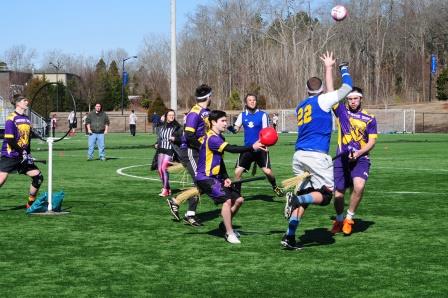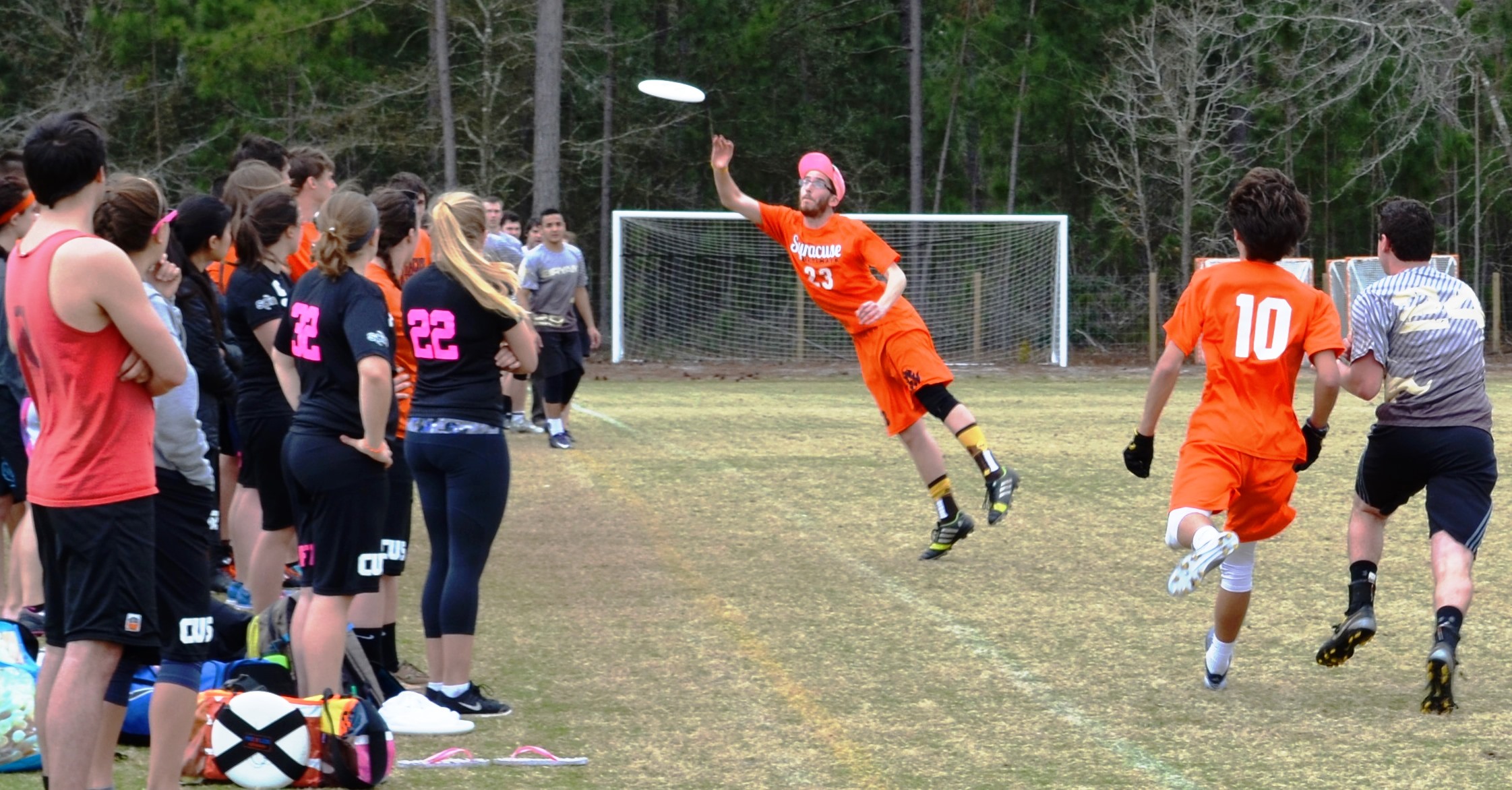Parks and Rec grow beyond swing sets and Little League

Quidditch Tournament/Photo: Wendy Waddle, City of Rock Hill
Gone are the days when public parks consisted solely of some children’s swings and slides. Today, parks and recreation departments offer a wide variety of programming to attract everyone from youngsters to senior citizens, at facilities and fields designed to serve the multiple needs of a community.
One trend in parks and rec has been programming geared toward teens. Many communities have focused on providing a safe place to go and productive things to do to keep teenagers out of trouble. This is a challenge, according to Jim Headley, executive director of the SC Recreation and Parks Association, both in finding programs and activities that interest teens and in providing the staffing and training to keep these programs running.
The Rock Hill Parks, Recreation and Tourism Department is targeting teens with programming—an effort supported by Rock Hill City Council through the City’s Strategic Plan, said PRT Director John Taylor.
The Rock Hill Youth Council and Youth Service League engage youth in volunteer efforts, community projects and event hosting to give them outlets for their free time and socialization. Youth sports leagues and individual activities such as tennis, cycling and kayaking also provide positive ways for teens to spend time, socialize and learn new skills, Taylor said. These activities can also fill a void for those not engaged in middle or high school athletics or other community programs, he added.
The City of Conway has invested in its parks system by building several new parks, a dog park, and a $6.5 million Recreation Center offering amenities and classes to people of all ages. The city’s Police Department also specifically reaches out to youngsters with a basketball league created to keep kids active and off the streets while building positive relationships with them and their families.
The Outreach Basketball League is offered free to any child in the area, from elementary to high school ages, said Corporal Cassandra Spain. The department has offered the league for the past five years, and currently more than 150 local kids participate.
"It’s a chance for us to offer fellowship and be positive role models to kids in the community," Spain said.
Cities want to attract young people and families, and many offer nontraditional activities to grab their attention, Headley said.
North Myrtle Beach has hosted a variety of off-the-beaten-path tournaments that give the city the opportunity to bring people to town for the first time, according to John Bullard, director of the Parks and Recreation Department for the City of North Myrtle Beach.
Quidditch—a version of the magical game played in "Harry Potter"—brought 79 college co-ed teams from 30 states and Australia. Ultimate Frisbee brought more than 200 teams to North Myrtle Beach from 28 states and Washington D.C.

Ultimate Frisbee/Photo: Pat Dowling, City of North Myrtle Beach
Other special events like the Diva Half Marathon brought more than 4,000 women runners from 48 states and several countries. Along with the runners came friends and family members, bringing the total number of visitors to more than 10,000 and a direct economic impact of more than $4 million, Bullard said.
"The nontraditional events give our community something new and exciting to watch and, in some cases like the Diva Half Marathon, participate in," Bullard said. "Keeping up with the latest trends is essential to success and adds to the legitimacy of the parks and recreation profession."
The City of Barnwell has a 9-hole disc golf course at its Fuller Park, which brings in visitors from nearby communities during the spring and summer, according to City Administrator John Zawacki.
"It’s nice to offer something other than the traditional recreation sports," he said. "This is something that anybody, of any age can do. Families can play this together. It’s easy to do, and it’s fun."
Recreation is ever changing, Bullard said. While there will always be the tried and true programs like soccer and baseball, new activities like Ultimate Frisbee and pickleball (a sport that combines elements of badminton, tennis and ping pong) will continue to emerge.
"Activities such as pickleball have gained popularity from all ages, especially from the baby boomers who have been known to decide where to retire based on the local pickleball scene," Bullard said.
While not all seniors may be such pickleball enthusiasts, city officials know that their recreation offerings do play a role in attracting retirees.
North Myrtle Beach is an area with an influx of retirees and snowbirds, and it’s important to offer a variety of programs to meet their needs, Bullard said. Some of the most popular programs that the city offers include pickleball, board and card games, dancing lessons and Zumba Gold.
"All of these programs are very popular and attract this group because of the fitness and social aspects," Bullard said. "Focusing on this group ensures that our seniors stay active in the community. By having a supportive parks and recreation department, it makes the city more attractive to potential retirees and vacationers."
Headley also notes that parks and recreation departments should consider activities for parents and grandparents who are taking children to ball fields for practices and games. Rather than having adults sit on the benches for an hour, get them involved in physical activity by offering a walking trail around the ball field, he suggested.
Designing those ball fields and public parks differently to allow for multiple uses is something Headley expects to see more of in the future. In the 1970s and 1980s, the trend was to design complexes with four or five ball fields, with the goal of attracting tournaments, he said. Today, cities need to consider designs that allow for fields to be used not only for ball games but also for multiple uses that all of the public can enjoy, such as festivals, playgrounds and walking trails.
Headley also foresees changes in how public parks will be funded, with more public-private partnerships.
"There’s only so much money to go around," he said. "But if we look at public parks and recreation as part of the solution to health and wellness issues, we could find ways to fund them through nontraditional means."
That includes getting doctors on board with supporting a "prescription for parks" and getting insurance companies to financially support parks, Headley said.
Increasingly, cities also are finding what makes their community unique, and building parks and recreation systems around those amenities.
The new Pacolet River Blueway is currently utilized by both kayakers and fishermen, locals and visitors alike, according to Pacolet Mayor Michael Meissner. Visitors come to town and buy gas and food from local stores, although no official study has been done on the economic impact.
"Expansion of the Greenway next to the Blueway is also something the town is com- mitted to, as it will offer even more outdoor activities for everyone," Meissner said.
A quality parks and recreation system impacts a community on many levels—it improves quality of life for residents, attracts businesses and visitors, helps the environment, and improves property values.
"People are at work for eight hours a day, but there’s another 16 hours out there where they need something to do," Headley said. "When you look at any area showing economic progress, they have a quality parks and rec system. Parks and rec is quality of life."
